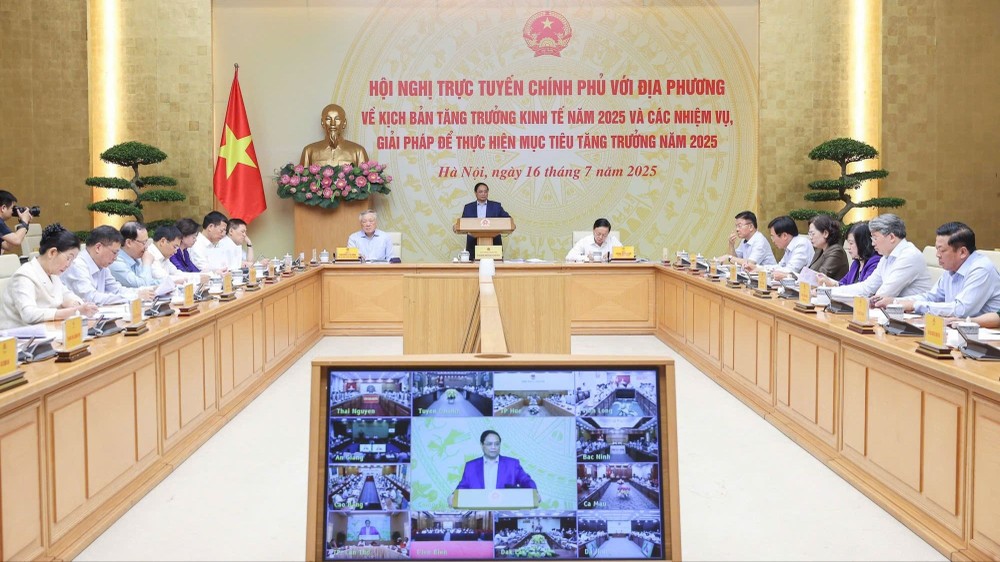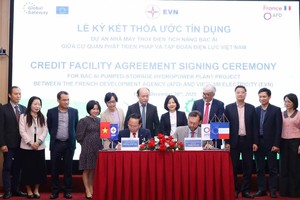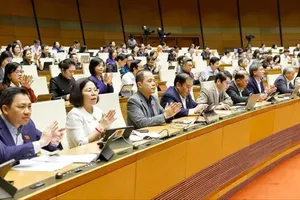The Ministry of Finance suggests that the Government and the Prime Minister guide and oversee ministries, sectors, and local authorities to pursue Scenario 2, aiming for a growth rate of 8.3 to 8.5 percent this year. This aims to create momentum for growth in 2026 to reach 10 percent or more.

At the conference between the Government and localities on the economic growth scenario for 2025 and the tasks and solutions to achieve the growth target for 2025, Minister of Finance Nguyen Van Thang stated that the ministry has consulted on developing two economic growth scenarios for 2025.
In Scenario 1, the growth for the entire year of 2025 is projected to reach 8 percent. Specifically, growth in the third quarter is expected to reach 8.3 percent compared to the same period, and in the fourth quarter, it is projected to reach 8.5 percent (0.1 percent higher than the scenario). The GDP scale for the year is estimated to exceed US$508 billion with GDP per capita at approximately $5,000.
For Scenario 2, targeting full-year growth of 8.3 to 8.5 percent in 2025, the ministry estimates third-quarter growth to reach 8.9 to 9.2 percent compared to the same period (0.6 to 0.9 percent higher than the scenario) and fourth-quarter growth to reach 9.1 to 9.5 percent (0.7 to 1.1 percent higher than the scenario). The GDP scale in 2025 is projected to exceed $510 billion with GDP per capita around $5,020.
The Ministry of Finance proposes that the Government and the Prime Minister guide and oversee ministries, sectors, and local authorities to pursue Scenario 2, targeting 8.3 to 8.5 percent growth, to build momentum for achieving 10 percent or higher growth in 2026.
The Ministry of Finance has outlined growth projections for localities, corporations and state-owned enterprises corresponding to the two scenarios. To meet these targets, localities must achieve a growth rate in 2025 exceeding the goals set in Resolution No. 25/NQ-CP, particularly for key growth drivers such as Hanoi, aiming for 8.5 percent growth (0.5 percent higher), Ho Chi Minh City at 8.5 percent (0.4 percent higher), Quang Ninh at 12.5 percent (1 percent higher), and Thai Nguyen at 8 percent (0.5 percent higher).
Corporations and state-owned enterprises are expected to achieve growth approximately 0.5 percent above their initial targets for the year.
To attain a growth rate of 8.3 to 8.5 percent in 2025, the Ministry of Finance emphasized the need to mobilize approximately $111 billion in total social investment capital in the last six months of the year, which is about $3 billion more than the scenario for 8 percent national economic growth. This includes disbursing around $28 billion in public investment (equivalent to approximately VND700,000 billion).
Ministries, agencies, and localities must fully disburse the 2025 capital plan and additional capital allocated in 2025 from increased revenues and state budget savings from 2024 (approximately VND152,700 billion). Private investment is projected at around $60 billion which is about $3 billion higher than the 8 percent growth scenario while foreign direct investment ( FDI) attraction is targeted at $18.5 billion with realized FDI capital at approximately $16 billion and other investments are estimated at about $7 billion.
The State Bank is urged to proactively adjust the 2025 credit growth target (around 16 percent) if needed, ensuring credit availability for priority sectors, fields, and projects.
Additionally, it should effectively implement the VND500,000 billion loan packages for businesses investing in infrastructure and digital technology, as well as the credit package for individuals under 35 to purchase social housing.
In his final remarks, Prime Minister Pham Minh Chinh urged the Ministry of Finance and the Government Office to quickly compile and incorporate feedback and suggestions, with the aim of finalizing and presenting a resolution to the Government that adjusts and assigns growth targets for the third quarter, fourth quarter, and the last six months of the year for the entire nation, as well as for each locality, industry, and sector.
The Prime Minister stressed that while the goal is highly challenging and fraught with major obstacles, it must be pursued relentlessly. This is not an unattainable objective. Failing to achieve it this year could impact growth targets in the following years and jeopardize the two centennial goals already established.
Outlining 16 key task groups and proposed solutions, the Prime Minister called for continued implementation of a proactive, flexible, timely, and effective monetary policy. The State Bank was instructed to stabilize the exchange rate, seek further reductions in interest rates, support production and business activities, safeguard livelihoods, and manage credit flows into economic growth engines such as the digital economy, green economy, circular economy, and social housing.
In parallel, a well-calibrated expansionary fiscal policy should be maintained to spur full disbursement of public investment—estimated at around VND1 million billion —and ensure total social investment rises by 11 percent to 12 percent compared to 2024.
The Prime Minister also urged the advancement of three strategic breakthroughs and the fostering of new growth drivers. For agriculture, ensuring food security and expanding exports to markets including China, the Middle East, Africa, and South America were prioritized. Regarding culture and tourism, he emphasized the development of cultural and entertainment industries and the adoption of favorable visa policies to enhance tourism promotion—aiming to reach the target of 25 million international visitors by 2025.
























